The Bailey Bridge
- 14th March 2024
Hailed as a key invention to come out of World War II, Bailey bridges allowed waterways and steep drops to be crossed quickly and easily. Have you spotted any around Worcestershire? Help us record these often overlooked heritage sites.
Named after the engineer and civil servant Donald Bailey, the Bailey Bridge was a prefabricated, modular and portable bridge, which could be assembled and disassembled quickly, without specialist tools or heavy equipment.
Developed in 1940-41 by a design team, led by Donald Bailey, based at the Military Engineering Experimental Establishment (MEXE) in Christchurch, many of its features were inspired by, or refinements of, previous bridge designs.
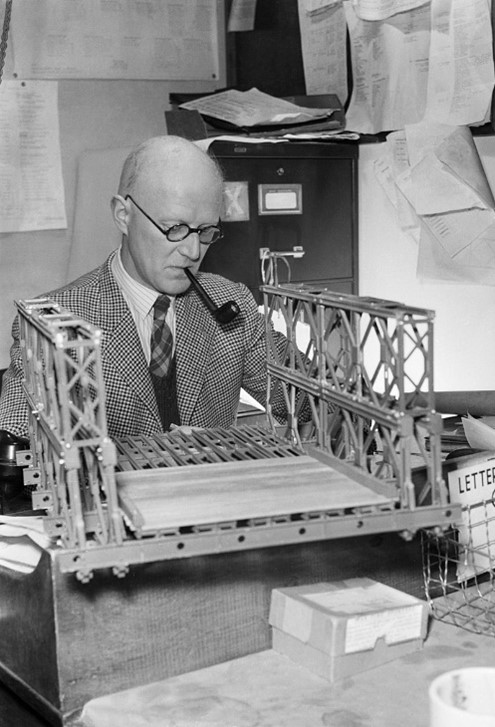
Photograph of Donald Bailey, lead designer of the Bailey Bridge. Dated 1944. © Imperial War Museum D 23537
A Bailey Bridge is a simple truss bridge, with the roadway carried between two main girders, formed from panels pinned together end to end and connected crossways by transoms. The strength of a girder can be increased by adding extra panels alongside and on top of the original panels, with different arrangements of panels known as ‘trusses’ and ‘storeys.’ The modular design of a Bailey Bridge allows engineers to build bridges of varying length, that can be launched from one side of a gap and rolled or pushed across a gap, using either manpower or a light weight vehicle.
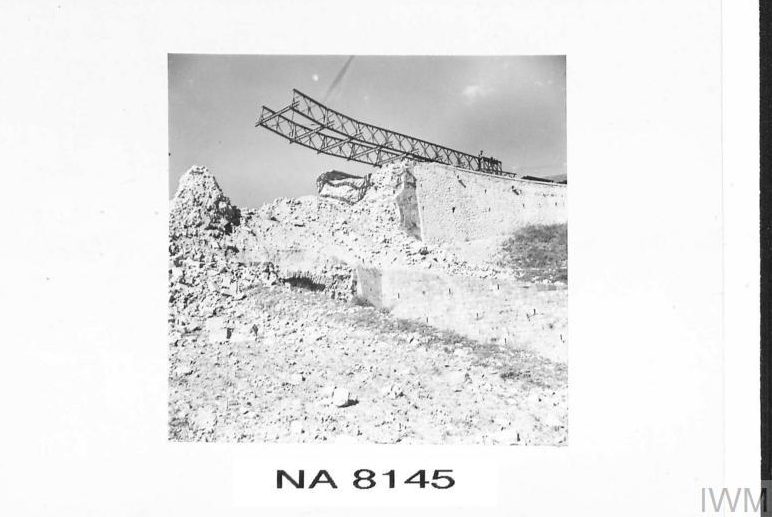
Photograph taken from under a blown out roadway, showing the nose of a Bailey Bridge projecting out over the edge of the gap. Dated 1943. © Imperial War Museum NA 8145
Strong enough to sustain the load of heavy machinery, including tanks, and flexible enough to be easily transported and put together, the significance of the Bailey Bridge to Allied victory in WWII was acknowledged by General Eisenhower, who described The Bailey Bridge as one of the three most important engineering and technological developments of the war, along with radar and the heavy bomber.
Nowadays Bailey Bridges continue to be used in civil engineering construction projects and to provide temporary crossings, including in war zones and disaster areas.
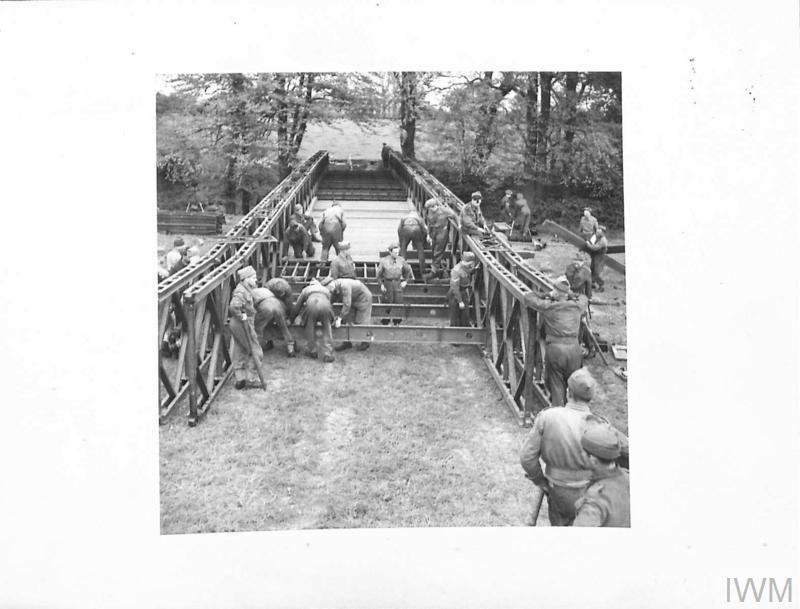
Photograph of soldiers erecting a Bailey Bridge, dated 1944. © Imperial War Museum H 38140
Bailey Bridges recorded in Worcestershire
The landscape of Worcestershire, like the landscape of many rural counties, is scattered with the remains of buildings, structures and places associated with World War II military infrastructure, civil defence, and commemoration. Many of these sites were recorded by volunteers as part of the Defence of Britain and Defence of Worcestershire Projects. These highlighted how many are at risk from neglect, deterioration and demolition.
However, despite extensive work, there remains more to be discovered, as indicated by two ‘recent discoveries’ of WWII Bailey Bridges – one over Dowles Brook in Wyre Forest and the otherover the River Salwarpe in Pike Mills Car Park, in Kidderminster.
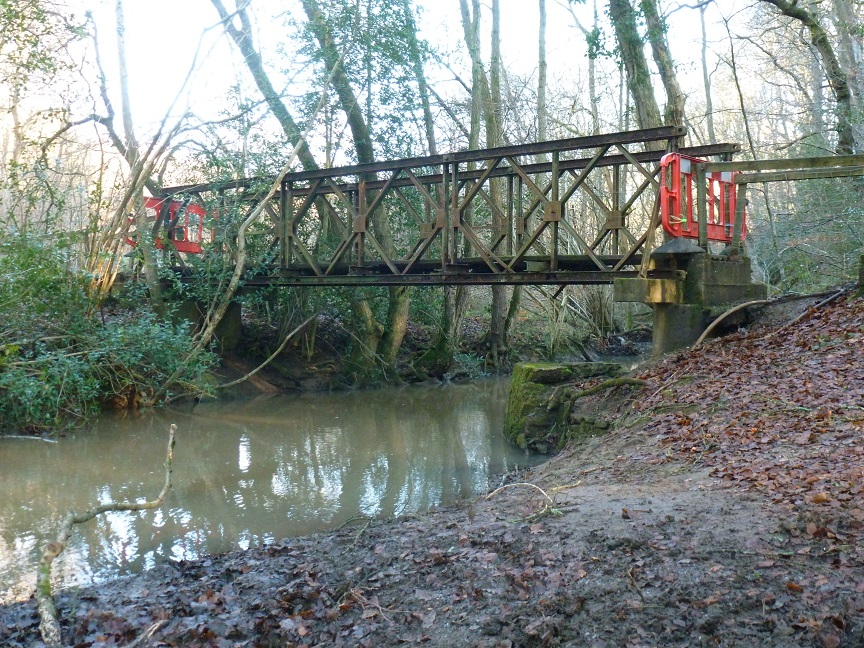
Photograph of WWII Bailey Bridge, north east of Rudds Bridge, Rock. Photograph © Susan Limbrey
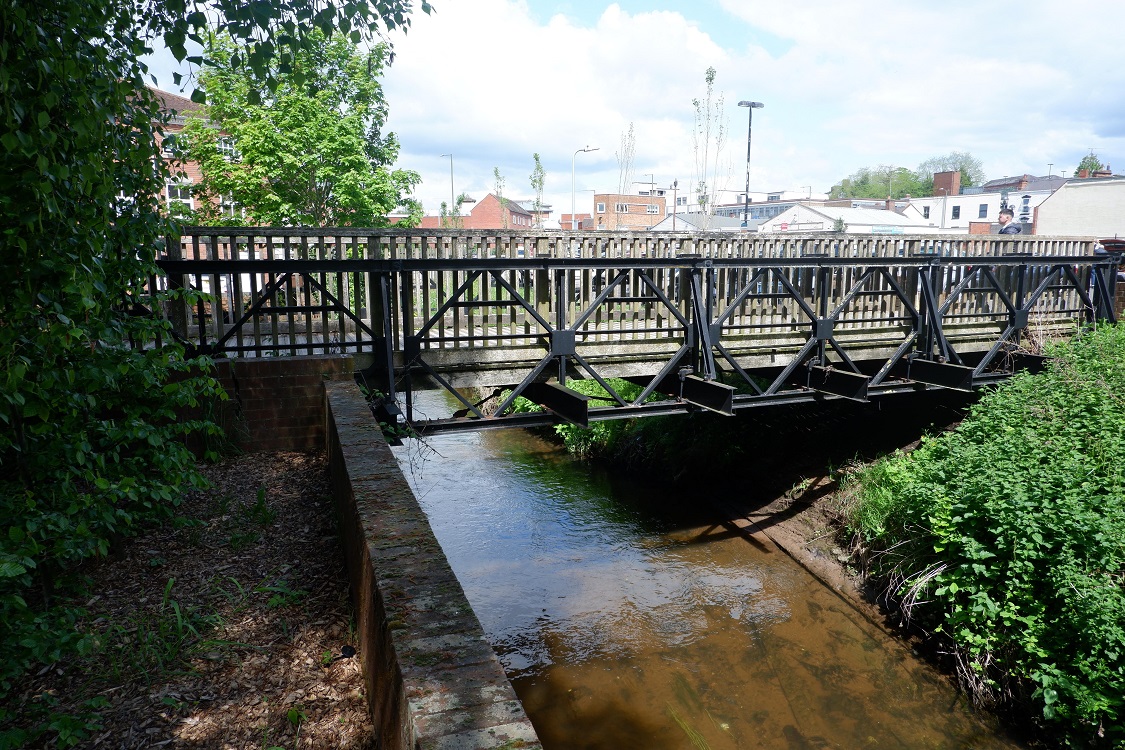
Photograph of WWII Bailey Bridge over the River Stour in Pike Mills Car Park, Kidderminster. Photograph © Worcestershire County Council
At present there is only one other reference to a Bailey Bridge on the Worcestershire Historic Environment Record; a Defence of Britain record for a lake used for Bailey Bridge training at Langdale Wood in Hanley Castle. The HER record notes the following;
Rectangular Lake, constructed by the Royal Engineers to form a training facility for Bailey Bridge erection. Two hut bases remain at the west end of the lake and the bridge abutment point can still be seen on the south side of the lake (as of 1997) Merebrook Camp [one of five army hospitals around Malvern built for the US Army] site approx. 1/2mile to the south east occupied by No.1 Training Battalion Royal Engineers from 1945 to ?
Can you help?
The Worcestershire Historic Environment Record would love to know of any additional WWII Bailey Bridges in the county. If you know of a surviving bridge, or merely the location of a Bailey Bridge, long gone, we would love to hear from you!
Please contact the Worcestershire Historic Environment Record, with any information at herecord@worcestershire.gov.uk
The Salwarpe is in Droitwich, not Kidderminster.
Maybe you meant to say the River Stour?
Well spotted! Thank you – yes, we did mean the River Stour and have now corrected the caption.